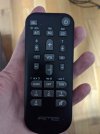KSTR
Major Contributor
While this plot really is remarkably clean, IME such tests must be done at various levels. Near full level alone might be too optimistic.Hi @MC_RME or @amirm
Can you do the same measurement as per the slide below, with your ADI-2 DAC ?
Rob Watts says his current DACs are the only ones in the world with no measurable noise floor modulation (below is his Hugo TT2 measured with his own APx555b)
Would be really nice to show him he is not correct

Hugo TT 2 by Chord Electronics - The Official Thread
I used to think DAC/amp that measures incredibly well would equal sterile and analytical sound, obviously not the case with Chord. Yes using traditional measurements there is truth in that observation. If you reduce 2nd harmonic distortion, and reduce higher order harmonics, things sound...www.head-fi.org

For example, I've found that the AKM AK4490 and AK4493 develop very(!) low level non-harmonic tones when a sine is played in a certain very limited level range. Many other D/S DAC chips are suspect to show this as well, including ESS (the hump, you know).
But first, let's see what an AK4493 in the RME ADI-2 Pro FS R does in loopback at -1dBFS, in an attempt of a comparison. I'm using the lowest sample rate, 44.1kHz and the largest FFT size, 4Meg points plus tons of averaging to reduce the noise floor in the FFT as much as any possible.
With 32 averages, the "1kHz@-1dBFS" plot looks like this:
We can see maybe a handful tiny little peaks just above -165dB on frequencies off the 1kHz grid, therefore non-harmonic. -160dB is already only a fraction of an 24 bit LSB and analog noise is another 20dB higher (at -120dBFS thereabouts) so we are looking at stuff at 1/100th of the RMS noise level, only visible by the extreme noise reduction from the FFT and samplerate setup.
The idle noise (not shown) is exactly the same BTW, is just the same noise without any frequency peaks.
The AK4493 get a bit weaker around -25dBFS with regard to modulation products... let's max out the averaging at 200x (took almost an hour to capture) and finally see something:
The effective FFT noise floor has now dropped to -175dB, exposing the train of artifacts nicely (but at a high cost).
But again it's all still below -150dB and therefore extremely deep down in the actual noise floor, I hardly can imagine any sonic degradation from that, even when considering a 20dB penalty for (alleged) dynamic worst-case errors with complex signals.


